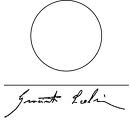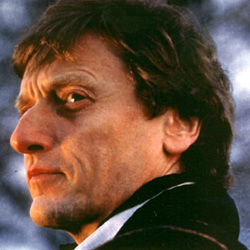So – no choices from the girls tonight, but I decided to rip a stack of discs that my friend Gwynne brought back. Most of the music is from the ‘spectral’ school… some Grisey, Hosokawa and some Scelsi. Then there is also the 4-CD box set of DG recordings of Ligeti’s music that the label put out after he passed away. So filling in some good late-20th century music onto the server.
I’ve learned quite a bit from this music, especially from Grisey and Scelsi. And regarding Scelsi, I also have a new feeling for what is and what isn’t dissonant. About 10 years ago, when I first heard his works (many of which consist of movements with a single pitch as a focus, and the instruments meandering around that pitch in microtonal inflections), I was stunned at how much SPACE there is between the notes of the piano. After hearing a couple of his quartets, seconds felt so consonant! Then, with Grisey, I would up going the other direction. I’m not at the point where pretty much anything other the octaves feels dissonant to me… even a perfect fifth creates some tension. But it also places dissonance, and the musical spectrum itself, into a broader context. How does a composer set up what is a feeling of stasis? Then how do they set up a way to move away from it?
Another thing that has happened in my mind as a result of that my definition of dissonance, and the negative connotations of dissonance, has itself changed considerably for me. I realized after teaching music theory for a couple of years, that we tend to pass value judgement onto dissonant intervals. They are almost seen as ‘bad’, they ‘need resolution’, you have to ‘prepare’ for them. And I think this terminology was stuck into my head as a thing to avoid. But there is so much color, rhythm and richness that can be explored in sounds with that have traditional dissonant relationships. Dissonance can be very beautiful.
I’m surprised it took the music of Grisey and Scelsi to show me this since I feel like there was a part of me that always knew this. In Ravel’s ‘Le Tombeau de Couperin’, the ‘Forlane’ has some of the most wonderful uses of minor and major seconds. They cause these sharp, little, brilliant pinpoints of light almost. They never resolve, and certainly don’t need to. I remember trying to copy these highlights of melodic sound in a set of piano pieces I wrote just after finishing up at Berkeley, but I was never able to get them to sound just right. Part of the problem was that I felt like these notes had to ‘lead’ somewhere. I wasn’t comfortable just letting a dissonant note hang there. But the real problem is that I wasn’t Ravel, writing piano music in the 1920s. Nor am I Grisey or Scelsi. But I am lucky enough to start to feel confident enough in what I do write so that, now, the notes I put down have intention. That I have an idea about what I want to achieve. I’m lucky to have started that process. Hopefully it is one that I keep working on as keep composing.



